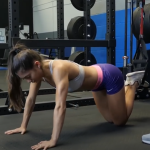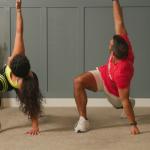Does dynamic stretching really live up to the hype, or have we all been stretching the truth?
Dynamic stretching is often hailed as one of the best pre-exercise rituals, essential for boosting performance and warding off injuries.
This active approach to flexibility involves movements designed not just to warm up the body, but also to enhance the muscles’ and joints’ readiness for intense physical activity.
But does that make it a one-stop shop for your flexibility and mobility needs?
Let’s take a closer look at whether dynamic stretching is genuinely a cornerstone of effective training or if its benefits are overstretched.

The Appeal of Dynamic Stretching
Dynamic stretching has carved out a prominent place in the fitness world, largely due to its ability to blend seamlessly into any workout regimen.
Everyone from weekend warriors to professional athletes tend to favor this method of stretching for a few reason:
Injury Prevention
By actively engaging the muscles in movements that closely mimic those in the workout or sport that follows, dynamic stretches prepare the body more specifically for physical exertion.
This specificity helps gradually increase the muscle temperature and blood flow, which, in turn, reduces the risk of pulls and strains. [6] [7] [8]
Performance Enhancement
Dynamic stretching isn’t just about getting ready; it’s about getting ahead.
Studies suggest that dynamic stretches can enhance muscular performance by improving power, speed, and agility.
This is because these stretches not only increase the temperature of the muscles but also activate the neural pathways involved in coordinated movements.
For sports that require high levels of explosiveness and coordination, such as basketball, soccer, or sprinting, dynamic stretching can provide an acute boost in performance that static stretches simply cannot match. [5] [6]
Ease of Integration into Routines
Another significant advantage of dynamic stretching is its versatility and simplicity. These stretches can be easily integrated into a pre-workout warm-up or used as standalone movements throughout the day to maintain flexibility and mobility.
Unlike static stretching, which requires holding a pose for a long duration, dynamic stretches are fluid and can be performed in a short time frame.
This convenience makes them particularly appealing to people who value fitness routines that are both effective and efficient.

Myth-Busting: Common Misconceptions about Dynamic Stretching
Dynamic stretching often gets wrapped up in a bunch of myths that can throw even the most committed fitness buffs for a loop.
Let’s dig into some of these common misunderstandings and see what the science really says:
Myth 1: Dynamic Stretching Is the Optimal Warm-Up for All Exercises
Reality Check: While dynamic stretching is highly beneficial for activities that require speed and mobility, such as soccer or basketball, it may not be the most effective warm-up for every type of exercise.
For example, in strength training, a combination of dynamic stretching and specific warm-up sets that target the muscles to be used can be more effective.
This tailored approach ensures that the muscles are adequately prepared for the types of stress they will encounter.
Research and expert opinions underscore the importance of customizing warm-up routines to fit the exercise or sport’s specific demands.
Myth 2: Dynamic Stretching Guarantees Injury Prevention
Reality Check: Although dynamic stretching can significantly reduce the risk of injury by preparing the muscles and joints for physical activity, no stretching routine can offer complete injury prevention.
Factors such as overuse, improper exercise technique, or inadequate recovery can still lead to injuries.
The consensus in the scientific community is that while dynamic stretching is beneficial, it should be part of a broader injury prevention strategy that includes strength training, proper technique training, and adequate rest.
Myth 3: All Dynamic Stretches Are Created Equal
Reality Check: The effectiveness of dynamic stretches varies significantly depending on the sport or activity.
For instance, high knees and leg swings are particularly beneficial for runners because they mimic the running motion and prepare the specific muscles and joints used.
In contrast, sports like swimming might benefit more from arm circles and shoulder mobility exercises that prepare the upper body.
Selecting dynamic stretches that closely replicate the movements of the sport can greatly enhance their effectiveness.
Myth 4: Dynamic Stretching Always Enhances Performance
Reality Check: While dynamic stretching has been shown to improve performance in many cases by preparing the muscles and nervous system for action, its impact can vary between individuals and different sports.
Excessive dynamic stretching can sometimes lead to a temporary decrease in muscle strength or alter muscle firing patterns, which may be detrimental to performance in sports requiring high power output, like weightlifting or sprinting.
Athletes should carefully balance their stretching intensity and duration to optimize performance without overshooting their muscular capacity.
Myth 5: Dynamic Stretching Can Replace a Complete Warm-Up
Reality Check: Dynamic stretching is an important part of an effective warm-up, but it should not be the only thing you do.
A comprehensive warm-up routine also includes cardiovascular exercises to increase overall body temperature and blood flow, along with sport-specific drills that prime the neuromuscular system for the movements to come.
This multifaceted approach ensures that athletes are fully prepared physically and mentally for the demands of their sport or activity.
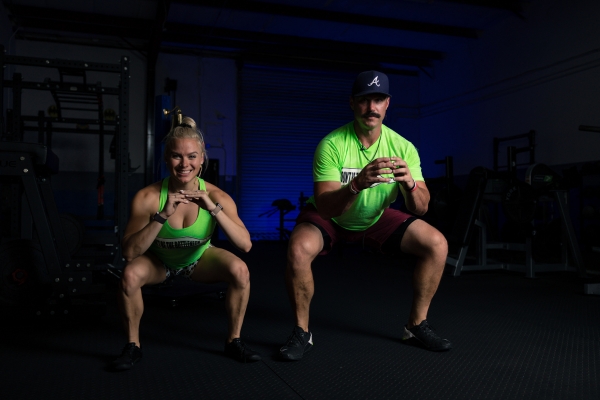
Drawbacks of Over-Reliance on Dynamic Stretching
While dynamic stretching offers numerous benefits, particularly as part of a warm-up routine, depending too heavily on it or executing it improperly can have its downsides.
It’s important to recognize that dynamic stretching isn’t a one-size-fits-all solution and to understand the contexts in which it might not be ideal.
Potential Risks and Drawbacks (If Not Performed Correctly)
Like any exercise, dynamic stretching takes time to get right.
It’s important you focus on proper form and execution, otherwise, you risk the following:
Risk of Overextension
Dynamic stretches typically involve movement and sometimes momentum.
If not performed with proper technique, this momentum can lead to overextending joints or pulling muscles, especially if the body is not sufficiently warmed up beforehand.
Muscle Fatigue
Since dynamic stretching activates muscles through movement, there’s a risk of tiring them out before the main activity begins, especially if the stretches are done too vigorously or for too long.
This can be counterproductive, as it might lead to decreased performance during the actual workout or competition.
Improper Activation
Misapplication of dynamic stretches — such as using stretches that do not appropriately target the muscles that will be used in the subsequent activity — can lead to inadequate preparation, potentially increasing the risk of injury during more intense physical exertion.
Scenarios Where Dynamic Stretching Might Not Be Ideal
As mentioned earlier, dynamic stretching shouldn’t be used in every situation.
Here are some scenarios where you might want to consider other forms of warming up and stretching:
During Recovery Periods
For individuals recovering from injury, particularly injuries related to muscles or joints, dynamic stretching may be too intense and could potentially exacerbate the injury.
In such cases, gentler forms of stretching or mobility exercises, often guided by a physical therapist, are more advisable.
In Cold Environments
Performing dynamic stretches in cold conditions without adequate general warming up can increase the risk of muscle strains.
Muscles tend to be stiffer in colder temperatures, and without a proper gradual warm-up, jumping into dynamic stretches can be harmful.
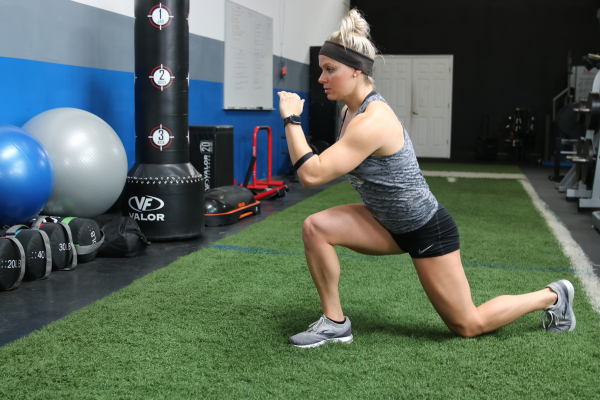
Comparing Dynamic to Other Stretching Techniques
Dynamic stretching is just one tool in a broad array of stretching techniques that also includes static and ballistic stretching.
Each method has its specific uses and benefits, depending on the type of activity and the fitness goals of the individual.
Dynamic Stretching
As previously discussed, dynamic stretching involves movements where the muscles and joints go through their entire range of motion.
These movements are generally used to prepare for activity by increasing blood flow and muscle temperature, which can enhance performance and reduce the risk of injury.
It’s especially effective before activities that require a high degree of mobility and coordination, such as soccer, basketball, or dance.
Static Stretching
Static stretching entails holding a stretch at the point of mild discomfort for a period, usually between 20 to 30 seconds.
This type of stretching is best used during cool-downs after exercise to increase flexibility and help relax the muscles.
It can be particularly beneficial for activities that benefit from increased range of motion, such as gymnastics and yoga.
Static stretching can also be helpful in recovery days as part of injury rehabilitation programs.
Ballistic Stretching
Ballistic stretching leverages the momentum of a swiftly moving limb to stretch it beyond its usual limits of motion.
This type of stretching is not recommended for most people due to the high risk of injury.
It involves bouncing movements where the end position is not held.
Ballistic stretching may be suitable for experienced athletes who need to perform dynamic movements in their sport, such as martial artists or high jumpers, but should be performed under professional supervision.

Effectiveness Depending on Fitness Goals and Activities
Understanding the differences between these stretching techniques and their appropriate applications is crucial.
It allows fitness enthusiasts and athletes to tailor their warm-up and cool-down routines to better meet their specific needs, thereby improving their overall performance and safety.
For Flexibility and Injury Rehabilitation: Static stretching is more effective. It allows for deep muscle relaxation and lengthening, which is crucial for improving overall flexibility and aiding recovery from muscle strain.
For Pre-Activity Warm-Ups: Dynamic stretching is preferable. It prepares the body for the specific demands of upcoming physical activities by activating the muscles through movements similar to those in the sport or activity, thereby enhancing performance and reducing the risk of acute injuries.
For High-Speed Sports Requiring Extreme Flexibility: Ballistic stretching could be considered, but with caution. If incorporated, it should be part of a well-designed training program managed by qualified professionals to avoid the potential for injury.
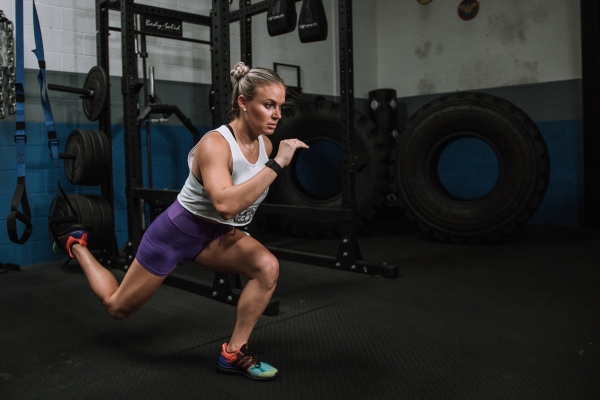
Wrap Up and Key Points
Dynamic stretching offers significant benefits when integrated appropriately into a fitness routine, particularly as a warm-up for activities requiring mobility and coordination.
However, it’s essential to dispel common myths surrounding its universal effectiveness and acknowledge potential risks when executed improperly.
Dynamic stretching isn’t a one-size-fits-all solution; its efficacy depends on factors such as individual fitness goals and the specific demands of the activity.
Understanding its role in comparison to other stretching techniques like static and ballistic stretching allows for a more tailored approach to warm-up and cool-down routines, ultimately improving performance and reducing the risk of injury.
Key Points to Remember
- Dynamic Stretching Benefits: Dynamic stretching is celebrated for enhancing performance, preventing injuries, and being easy to integrate into workout routines due to its active approach that mimics sports-specific movements.
- Myth Debunking: It addresses misconceptions about dynamic stretching, clarifying that it’s not always the optimal warm-up for every exercise, doesn’t guarantee injury prevention, and that not all dynamic stretches are equally effective for every activity.
- Performance Enhancement: Dynamic stretching can improve power, speed, and agility by increasing muscle temperature and activating neural pathways, making it particularly beneficial for sports requiring explosiveness.
- Risks of Overextension and Muscle Fatigue: Improper execution of dynamic stretches can lead to overextension, muscle fatigue, and inadequate muscle preparation, which could decrease performance or increase injury risk.
- Limited Scenarios: Dynamic stretching may not be ideal in situations like recovery periods, extremely cold environments, or non-dynamic sports, where a more tailored or gentle approach might be necessary.
- Comparison with Other Techniques: Compared to static and ballistic stretching, dynamic stretching is best used for warm-ups, while static is ideal for cool-downs and flexibility, and ballistic stretching is generally not recommended due to its high injury risk.
- Tailored Application: The effectiveness of any stretching routine, including dynamic stretching, depends on correctly matching the technique to the athlete’s needs and the demands of the sport or activity.
References
Archives of Internal Medicine
Freburger JK, Holmes GM, Agans RP, Jackman AM, Darter JD, Wallace AS, Castel LD, Kalsbeek WD, Carey TS. The rising prevalence of chronic low back pain. Arch Intern Med. 2009 Feb 9;169(3):251-8. doi: 10.1001/archinternmed.2008.543. PMID: 19204216; PMCID: PMC4339077.
Journal of Functional Morphology and Kinesiology
Bryant J, Cooper DJ, Peters DM, Cook MD. The Effects of Static Stretching Intensity on Range of Motion and Strength: A Systematic Review. Journal of Functional Morphology and Kinesiology. 2023; 8(2):37. https://doi.org/10.3390/jfmk8020037
International Journal of Exercise Science
Brodeur ZR, Paustian MJ, Monteleone-Haught DA, Lamm RA, Pagano AG, Ellis CE. The Effects of Static and Dynamic Stretching on Muscle Oxygen Saturation in the Rectus Femoris. Int J Exerc Sci. 2022 May 1;15(3):702-708. PMID: 35991352; PMCID: PMC9365106.
Journal of Motor Behavior
Oba K, Ohta M, Mani H, Suzuki T, Ogasawara K, Samukawa M. The Effects of Static Stretching On Dynamic Postural Control During Maximum Forward Leaning Task. J Mot Behav. 2023;55(6):594-602. doi: 10.1080/00222895.2021.1909529. Epub 2021 Jun 21. PMID: 34148509.
Journal of Sports Science and Medicine
Iwata M, Yamamoto A, Matsuo S, Hatano G, Miyazaki M, Fukaya T, Fujiwara M, Asai Y, Suzuki S. Dynamic Stretching Has Sustained Effects on Range of Motion and Passive Stiffness of the Hamstring Muscles. J Sports Sci Med. 2019 Feb 11;18(1):13-20. PMID: 30787647; PMCID: PMC6370952.
Sports Medicine
Opplert J, Babault N. Acute Effects of Dynamic Stretching on Muscle Flexibility and Performance: An Analysis of the Current Literature. Sports Med. 2018 Feb;48(2):299-325. doi: 10.1007/s40279-017-0797-9. PMID: 29063454.
International Journal of Sports Physical Therapy
Page P. Current concepts in muscle stretching for exercise and rehabilitation. Int J Sports Phys Ther. 2012 Feb;7(1):109-19. PMID: 22319684; PMCID: PMC3273886.
Sports Medicine
Behm DG, Alizadeh S, Daneshjoo A, Konrad A. Potential Effects of Dynamic Stretching on Injury Incidence of Athletes: A Narrative Review of Risk Factors. Sports Med. 2023 Jul;53(7):1359-1373. doi: 10.1007/s40279-023-01847-8. Epub 2023 May 10. PMID: 37162736; PMCID: PMC10289929.












































































